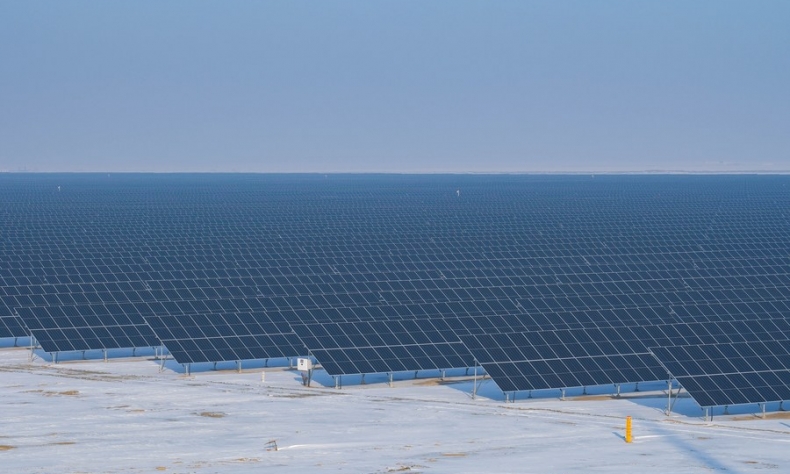The Myth of the Green Ceiling

China is continuing to promote technology and product innovation, actively integrating into the global clean energy industrial chain and sharing high-quality clean energy products with the world.
China’s clean energy sector has become a global focus. In recent years, China has achieved remarkable progress in clean energy development, maintaining the world’s leading position in installed capacity and making significant progress in improving technologies and industrial chains. China is increasing the share of energy that comes from greener sources, giving priority to non-fossil energy, low-carbon energy and renewable energy in its drive toward carbon peaking and neutrality.
However, China’s achievements, technologies and market advantages in the clean energy sector have also led to criticism by trade protectionists overseas. They claim China’s “overcapacity” in the new energy sector distorts global prices and production patterns.
But is there really overcapacity in China’s clean energy sector? The figures suggest otherwise. According to the National Energy Administration, natural gas, hydropower, nuclear power, wind power and solar power accounted for 26.4 percent of China’s energy consumption mix in 2023, up by 0.4 percentage points year on year. Thermal coal still accounted for a large proportion, growing 5.6 percent in 2023 year on year. In other words, although China’s clean energy sector is developing rapidly, it is still far from satisfying the country’s needs for green and low-carbon development.
Also, as drivers of global climate governance and the promotion of green and low-carbon development, China’s clean energy businesses, especially wind power and solar power companies, are increasing global demand even as they strive to meet it.
China’s competitiveness in clean energy mainly comes from technological advantages, high-quality products and reasonable prices. It is groundless to allege overcapacity in China’s clean energy sector just because its market share keeps growing.
China has become an indispensable force in global clean energy development. Chinese enterprises are investing in clean energy projects all over the world, covering wind power, solar power and hydropower. These mutually beneficial investments have supported green and low-carbon energy development in these countries. China is continuing to promote technology and product innovation, actively integrating into the global clean energy industrial chain and sharing high-quality clean energy products with the world.
At present, China’s wind and solar power products have been exported to more than 200 countries and regions. According to a report from the International Renewable Energy Agency, in the past decade, the levelized costs of energy of global wind power and solar power generation projects have fallen by more than 60 percent and 80 percent, respectively. A large part of this reduction has been brought about by Chinese innovation, products and projects. While contributing to global clean energy development, China welcomes investment from all over the world, and continues to create a market-oriented, law-based and international business environment, to cooperatively promote clean energy development and facilitate the global energy transformation.
The development of China’s clean energy industry is conducive to greening its energy mix, lowering its dependence on fossil fuels, reducing environmental pollution and improving its energy security. In the meantime, clean energy development is also providing new impetus for China’s economic transformation, boosting development of related industrial chains and making contributions to reducing carbon emissions and the global efforts to address climate change.
Clean energy development also faces challenges, such as further raising its proportion in the energy mix, increasing the stability of renewable energy, and balancing clean energy development and economic returns. All these need to be solved through multiple efforts, including technology innovation, policy support and the market mechanism.
 Facebook
Facebook
 Twitter
Twitter
 Linkedin
Linkedin
 Google +
Google +










